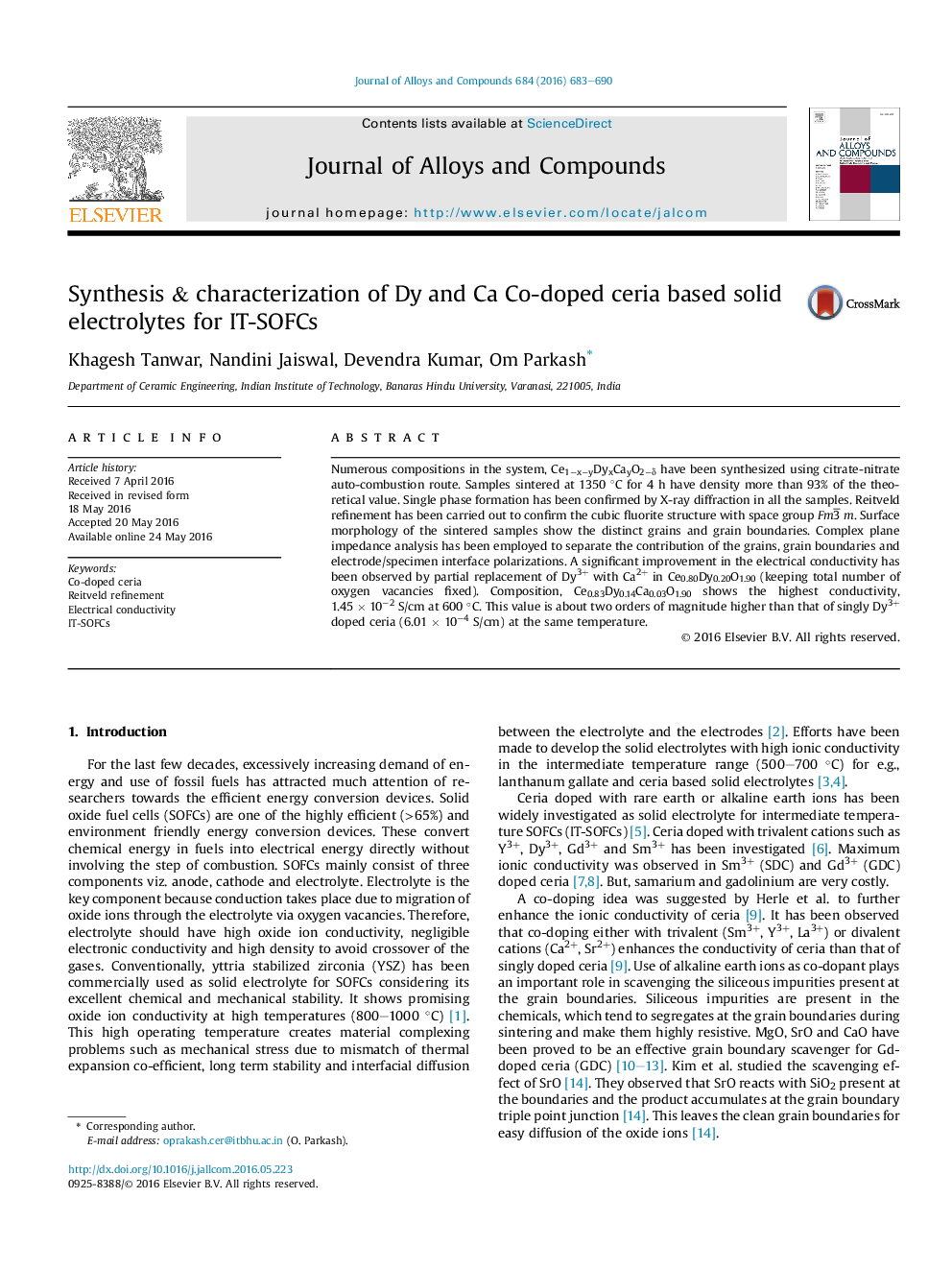| Article ID | Journal | Published Year | Pages | File Type |
|---|---|---|---|---|
| 1605303 | Journal of Alloys and Compounds | 2016 | 8 Pages |
•The system Ce1−x−yDyxCayO2−δ has been investigated for the first time.•In present study, number of oxygen vacancies is kept constant in all composition.•Composition Ce0.83Dy0.14Ca0.30O1.90 has maximum conductivity at 600 °C.•It is much less costly than that of SDC and GDC.•This makes it a promising candidate as a solid electrolyte for IT-SOFCs.
Numerous compositions in the system, Ce1−x−yDyxCayO2−δ have been synthesized using citrate-nitrate auto-combustion route. Samples sintered at 1350 °C for 4 h have density more than 93% of the theoretical value. Single phase formation has been confirmed by X-ray diffraction in all the samples. Reitveld refinement has been carried out to confirm the cubic fluorite structure with space group Fm 3¯m. Surface morphology of the sintered samples show the distinct grains and grain boundaries. Complex plane impedance analysis has been employed to separate the contribution of the grains, grain boundaries and electrode/specimen interface polarizations. A significant improvement in the electrical conductivity has been observed by partial replacement of Dy3+ with Ca2+ in Ce0.80Dy0.20O1.90 (keeping total number of oxygen vacancies fixed). Composition, Ce0.83Dy0.14Ca0.03O1.90 shows the highest conductivity, 1.45 × 10−2 S/cm at 600 °C. This value is about two orders of magnitude higher than that of singly Dy3+ doped ceria (6.01 × 10−4 S/cm) at the same temperature.
